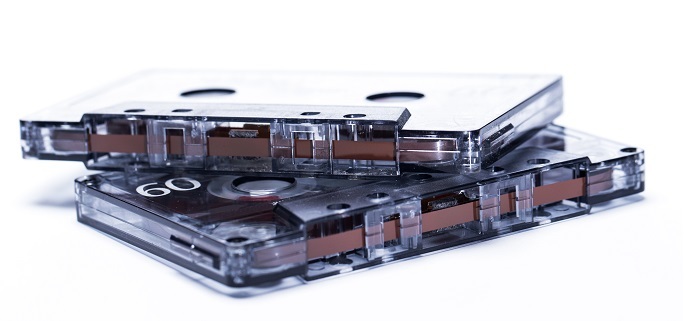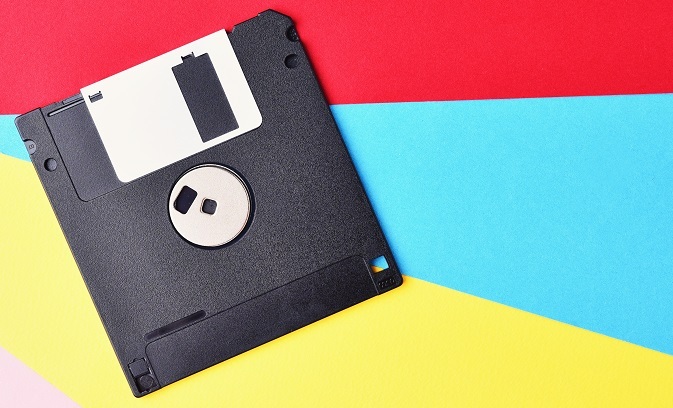
 Data Structure
Data Structure Networking
Networking RDBMS
RDBMS Operating System
Operating System Java
Java MS Excel
MS Excel iOS
iOS HTML
HTML CSS
CSS Android
Android Python
Python C Programming
C Programming C++
C++ C#
C# MongoDB
MongoDB MySQL
MySQL Javascript
Javascript PHP
PHP
- Selected Reading
- UPSC IAS Exams Notes
- Developer's Best Practices
- Questions and Answers
- Effective Resume Writing
- HR Interview Questions
- Computer Glossary
- Who is Who
What is the full form of GCR?
Introduction
Group Code Recording (GCR) refers to the process of encoding methods for conveying data on magnetic media. The first falls within this category and has been applied to magnetic tape with a 6250 bpi since 1973. It combines a run length limited (RLL) encoding method with an error-correcting code.

The other approaches included a number of mainframe hard disk and floppy disk encoding methods that were used in certain microcomputers up to the late 1980s. GCR is a modified NRZI code with a bigger transition density by necessity.
History of GCR
Group code recording, often referred to as block coding or symbolic coding, is a technique used in computer-aided design (CAD) and computer-aided manufacturing (CAM) systems to represent data in a condensed form. It entails giving codes to different geometric objects like lines, circles, arcs, and polygons and combining them into a single block or object.
Group code recording has a long history that begins in the 1960s with the creation of the first CAD systems. Computers at the time did not have the processing ability to store and process vast volumes of data since technology was still quite primitive. Because of this, engineers and designers had to figure out how to depict their concepts utilising the least amount of memory.
Using group code recording, which allowed several geometric elements to be represented using a single code, was one of the answers. This technique quickly established itself as a common component in many CAD systems since it was so successful at minimising the quantity of data that needed to be saved.
Group code recording grew in popularity in the 1970s and 1980s as more potent computers and new CAD systems were developed. This approach was widely used as the principal means of data representation in CAD systems, and the CAD/CAM industry relied heavily on it.
Even though it has been augmented by other techniques like parametric modelling and feature-based design, group code recording is still commonly used in CAD and CAM systems today. However, it continues to be a vital tool for compactly representing complex geometry and is still employed in a variety of fields, such as manufacturing, aerospace, and the auto industry.
Applications of GCR
Systems for computer-aided design (CAD) and computer-aided manufacturing (CAM) use group code recording (GCR), often referred to as block coding or symbolic coding, in a number of ways. Some of the applications of GCR are
Compact data representation The compact representation of complicated geometric data is one of the main uses of GCR. GCR enables CAD/CAM systems to effectively store and analyse huge volumes of data by assigning codes to various geometric elements and combining them into a single block.
Standardisation GCR offers a standardised means of displaying data that is easily transferable between various CAD/CAM systems. In spite of the tools they are employing, this enables designers and engineers to work together on projects.
Automation GCR can be utilised in CAD/CAM systems to automate routine processes. Designers may easily include a certain feature or component into their designs without having to recreate it each time by developing a block that symbolises it.

Overall, GCR is a flexible tool with a wide range of uses in the CAD/CAM sector. It enables engineers and designers to work quickly, automate processes, and create high- quality produced goods and designs.
Advantages of GCR
In GCR, four bits of data are typically represented by a group of five bits of code, where the encoding makes sure that no more than two or three zeros and no more than eight or so ones appear consecutively (zeros denote the absence of magnetic change). Some advantages of GCR are as follow
Flexibility GCR is a versatile tool that may be adjusted to meet the requirements of many CAD/CAM systems. The entities in a designer's or engineer's designs can be represented by their own blocks and codes. They are able to work more productively and create better designs as a result.
Programming To manage the production process, CNC machines may be programmed using GCR. GCR enables machine operators to rapidly and precisely configure CNC machines by assigning codes to various machining operations.
Error checking GCR may be used to find mistakes in CAD/CAM designs. Each entity in a design is given a different code by GCR, which makes it simple to check that every entity is there and is in the right place.
Conclusion
Group code recording (GCR) is a term used in computer science to describe a number of different but connected magnetic media encoding techniques. The first is an error- correcting code coupled with a run-length restricted encoding technique, and it is utilised in 6250 cpi magnetic tape. The rest are various floppy disk encoding techniques that were employed in a few microcomputers up to the late 1980s. Group Code Recording (GCR) is an 8-bit floppy disk data encoding standard that Commodore Business Machines created for use in 514" disk drives for their 8-bit home and personal computers. The single-sided Commodore 1541 drive, which was used with the C64 computer, is perhaps the drive that is most recognized for using GCR.
FAQs
Q1. What are the advantages of GCR?
Due to the fact that GCR requires fewer bits to represent the data than conventional recording techniques, more data may be recorded on magnetic tape. Because it uses distinct codes for each group of zeroes, it also offers better error correction and detection capabilities than other approaches.
Q2. When was GCR first developed?
GCR was initially developed to increase the storage capacity and dependability of magnetic tape in the 1970s.
Q3. Is GCR still used today?
Even though GCR isn't used as frequently as it once was, it is still used in a few older software programs and systems that use magnetic tape storage. However, as a primary data storage medium, newer technologies like solid-state drives and cloud storage have largely replaced magnetic tape.

